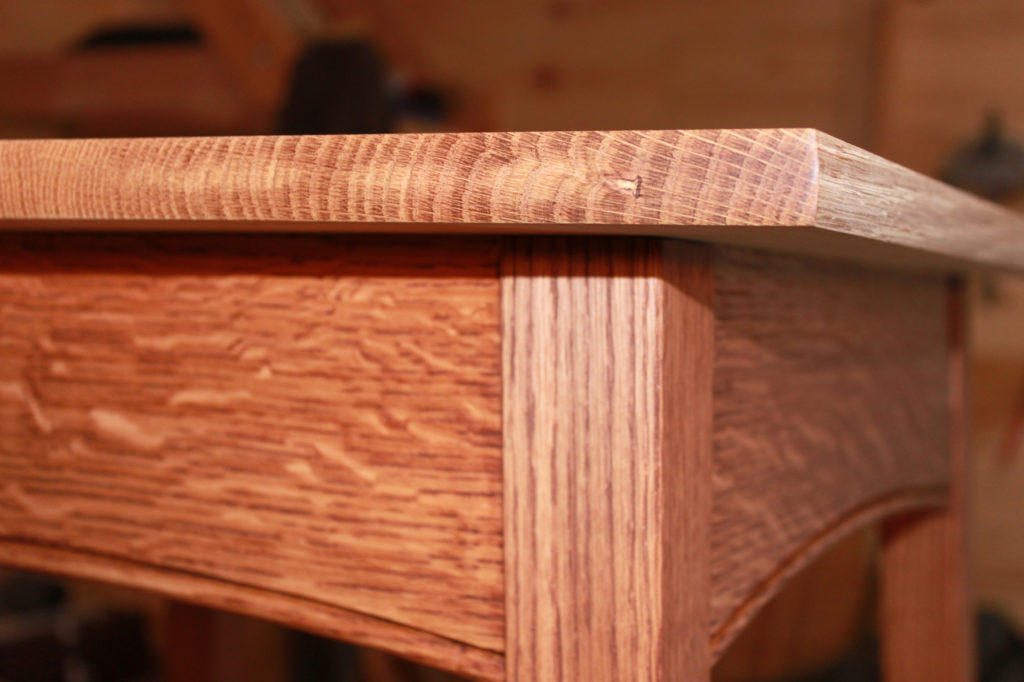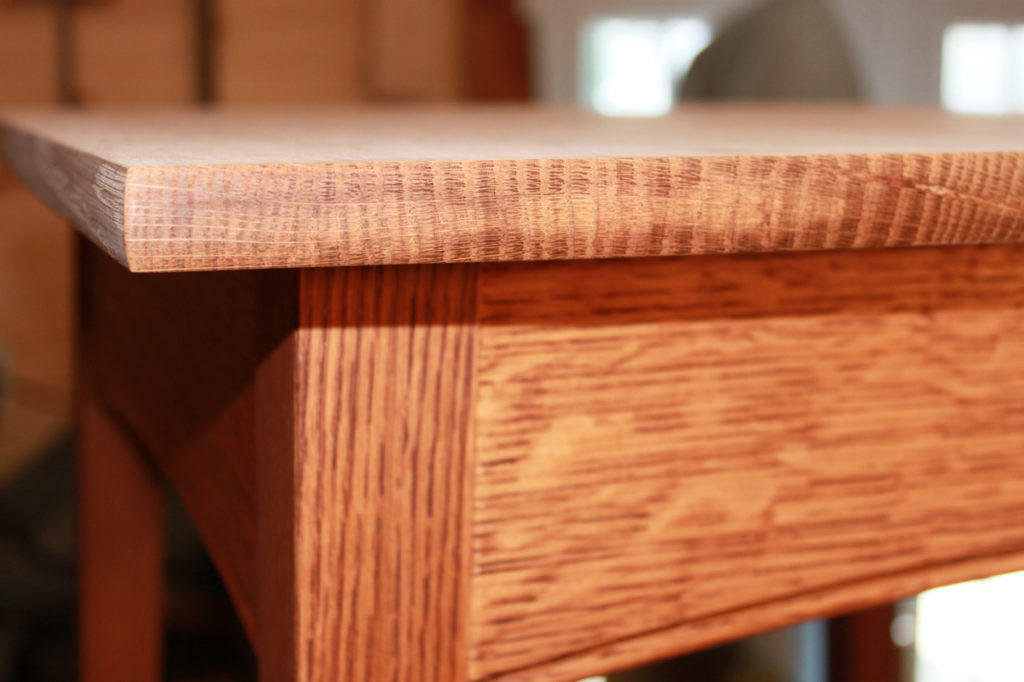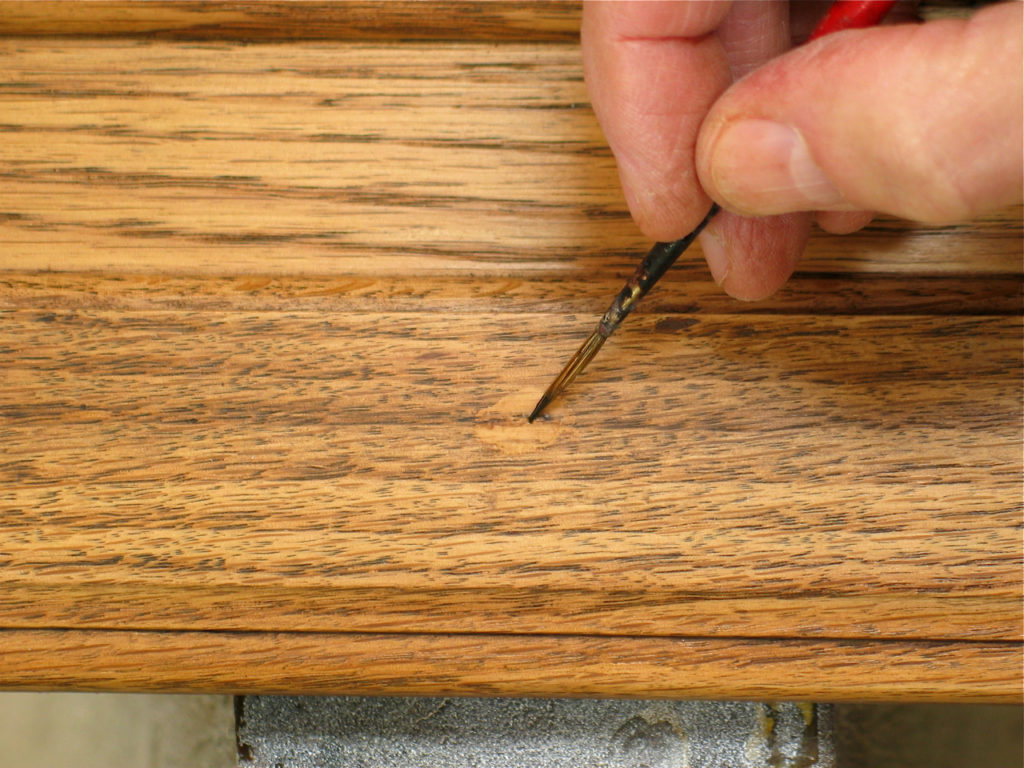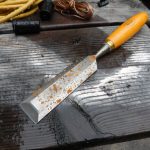We may receive a commission when you use our affiliate links. However, this does not impact our recommendations.

The three lighter spots on the end grain of this white oak tabletop didn’t accept stain like the rest of the wood.
I received a question from a woodworker who had made an end table from quartersawn white oak and had a problem with the stain penetrating unevenly. The problem showed up just on the end grain, not the long grain. And it showed up on both ends of the board.

The flaw went all the way through the board to the other end.
The woodworker explained that he had tried to fix the problem by cutting off a little of the end grain (handplaning it back, actually), reshaping the half-round and sanding the wood smooth. Same thing happened. Light areas in the end grain. What could be causing this and how to fix it?
I begged off of identifying the cause because I’m not a wood technologist, but the woodworker was curious enough to send these pictures to a wood technologist who explained that the cause was tension wood – flaws caused by the tree being put under stress.
No matter the cause, the more important question was what to do now. He wanted the table to be perfect.
First, I explained that wood often doesn’t take stain evenly, that wood is a natural material that often has flaws. Furthermore, and personally, these lighter areas didn’t bother me. He should be happy the problem didn’t show up on the top of the board, which it would have if the grain hadn’t been so straight or if the board had been sawn through the middle of the flaw rather than on both sides it.
Second, I explained that the only thing to do now was to paint in lighter colors with a darker color that comes close to matching the surrounding wood. This would not be easy to pull off because of the different colors of the spring and summer growth rings. Also, whatever color he puts on top would necessarily muddy the wood a little.
There are specialized products used by technicians who do touch up on damaged furniture and woodwork, but it would be expensive to buy all the products. So I suggested he mix the stain he had used, which was an oil stain, with a little wiping varnish (to increase the amount of binder to better lock the touch up in place). Then, using a fine-tipped artist’s brush, paint in the colors to match better.

I don’t have the table itself, of course, to show the method of repair, but it is the same as I’m showing here on a glue spot that prevented stain penetration.
He should let this touch up dry thoroughly before applying topcoats so as not to remove some of the color.
– Bob Flexner
Here are some supplies and tools we find essential in our everyday work around the shop. We may receive a commission from sales referred by our links; however, we have carefully selected these products for their usefulness and quality.








